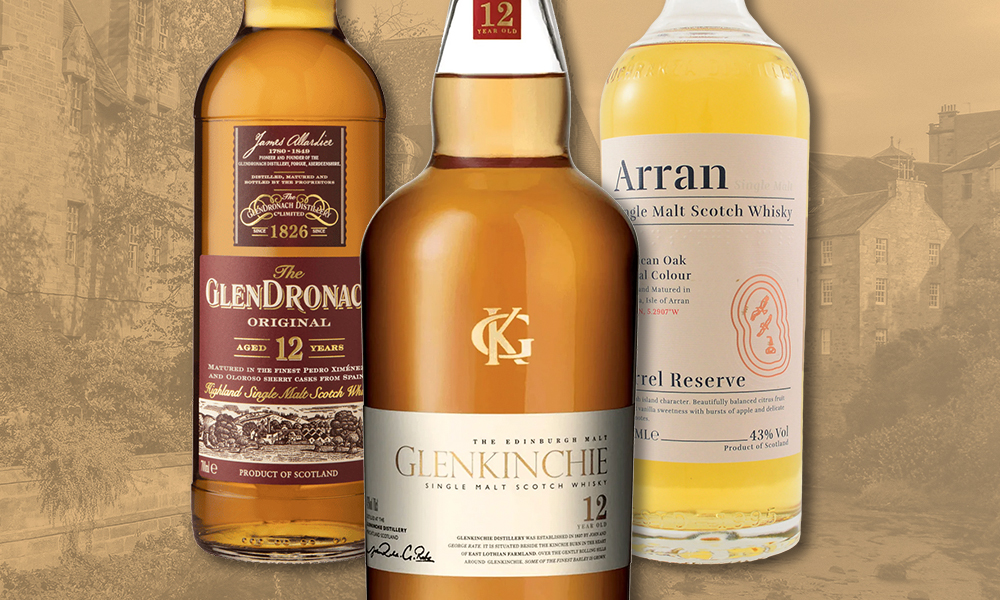If you don’t know much about Scotch whisky, you might assume that everything that falls into the broader “Scotch” category all tastes about the same. While there are similar flavors throughout (like vanilla, caramel, oak, and candied orange peels), a bottle of blended Scotch whisky and a bottle of Islay single malt and a bottle of single malt Highlands whisky all taste very different. After all, would you buy two random bottles of bourbon and assume they’d taste the same? How about rye whiskey?
Scotland is home to more than 140 distilleries spread out across the country in five distinct regions: Campbeltown, the Lowlands, the Highlands, Speyside, and Islay. Some experts add a sixth region referred to as “The Islands,” which consists of whisky produced on the various Scottish islands besides Islay. Each region is home to different distilleries crafting whiskies with different (albeit subtly so) ingredients, aromas, and flavors. This diversity is part of the appeal of Scotch whisky as a whole.
If you were to stop in each region and grab one or two bottles and then blindly nose and taste them, there are nuanced, subtle differences between some and the obvious differences between others. Some are softer and sweeter, while others are fruitier. Still others are robust and smoky. Finding the right Scotch for you is really just a matter of finding the region that you like best.
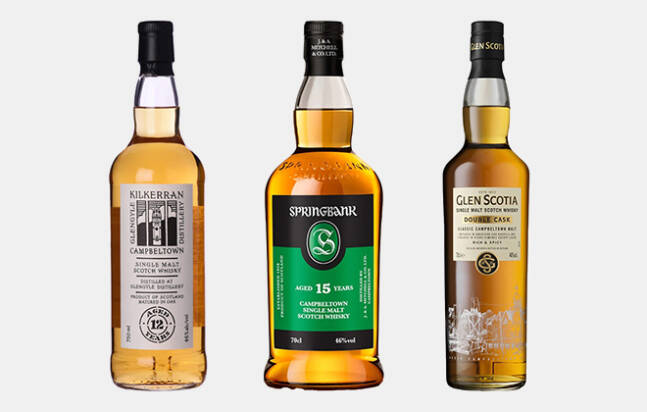
Campbeltown
Brands to try: Glengyle, Springbank, Glen Scotia
The smallest region, Campbeltown has by far the least number of distilleries currently operating. It’s home to Springbank, Glengyle, and Glen Scotia distilleries. That’s it. At one point, in the 1800s, the region was home to more than 30 distilleries. In terms of flavor, Campbeltown, due to its limited number of distilleries, is harder to pin down than some of the others. But, in general, Campbeltown whiskies are known for a mix of ocean brine (due to the close proximity to the sea), light smoke, dried fruits, sticky toffee pudding, and toasted vanilla beans. They’re rich, bold, and highly complex. To dive a little deeper, Springbank is more known for smokier whiskies; Glen Scotia for lighter, sweeter expressions; and Glengyle for its mix of smoke, fruits, and vanilla.

Highlands
Brands to try: Oban, Glenmorangie, Dalmore, Royal Brackla, GlenDronach
By far Scotland’s largest Scotch whisky region by size (although second in terms of distilleries), the Highlands is known for its wildly diverse whiskies. It’s home to 25 distilleries. Even with all of these distilleries, the Highlands still only make up around 25 percent of the whiskey production in the country.
When it comes to flavor, the massive geographic area makes for very diverse, differing flavors depending on what distillery you get a bottle from. They range from sweet, light, and soft whiskies to whiskies that have notes of salted caramel, fruit, and vanilla. If you had to generalize, you’d probably say that whiskies from the Highlands are known for flavors of honey, heather, oak, dried fruits, and gentle smoke.

Lowlands
Brands to try: Glenkinchie, Bladnoch, Auchentoshan
After the Highlands, the Lowlands is the second largest area in terms of size. But, with all that land, it’s only home to around a dozen distilleries, and this is only because a handful have opened their doors in the last few years (with a few more opening soon). Whiskies from the Lowlands are generally lighter and softer than some of the others. With notes of butterscotch, vanilla cream, dried grass, honey, and light spices, it’s a great region for beginners to get acquainted with single malt and blended Scotch whiskies.
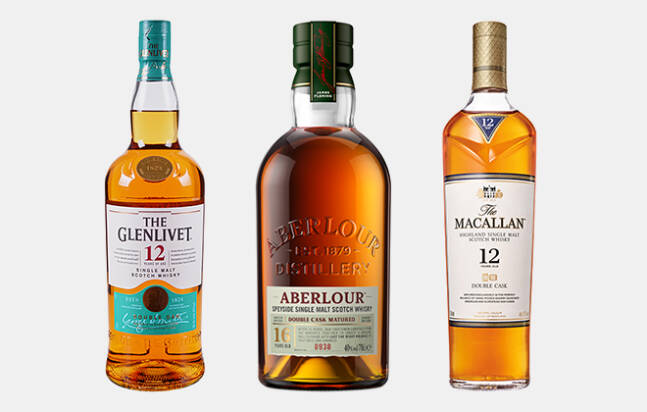
Speyside
Brands to try: Glenlivet, Glenfiddich, Aberlour, The Balvenie, The Macallan
While Speyside might not be the largest region in terms of land mass (it’s the third biggest), it’s by far the most saturated in whisky. This is because it’s home to more than 50 (yes, you read that right) distilleries.
Such a large sample size means that Speyside whiskies have a complex, diverse palate that includes ripe orchard fruits like apple and pear as well as sweet honey, toasted vanilla beans, oak, and spice. There are quite a few distilleries currently aging or finishing their whiskies in former sherry casks. This adds an extra dried cherry, fruity flavor to already rich, memorable single malts.
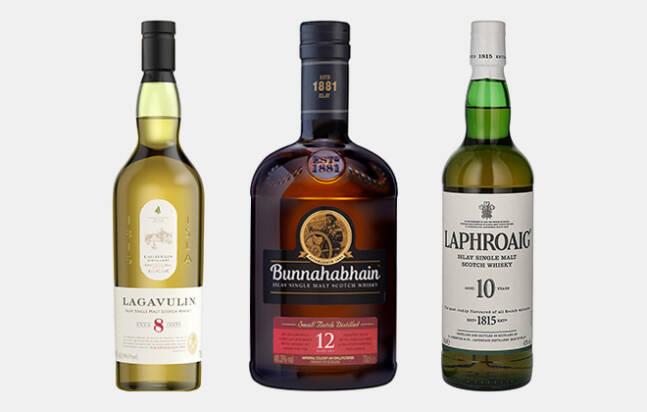
Islay
Brands to try: Lagavulin, Ardbeg, Bunnahabhain, Bruichladdich, Laphroaig
For fans of peated whisky, Islay is by far the most interesting region in Scotland. It’s a sheep and Highland cow-filled island situated in the Inner Hebrides. And while it’s only around 300 square miles and only home to a little over 3,000 people, it’s home to nine active distilleries. This includes such massive names as Lagavulin, Ardbeg, Laphroaig, and Bruichladdich.
While there are a few exceptions (including some of the expressions from Bruichladdich and Bunnahabhain, though the former also makes the world’s most peaty whisky), the island is known for its bold, robust, peat-smoked whiskies. Flavors like campfire smoke, salted caramel, vanilla, and dried fruits abound. If you’re looking for a smoke bomb of a whisky, look no further than Islay.
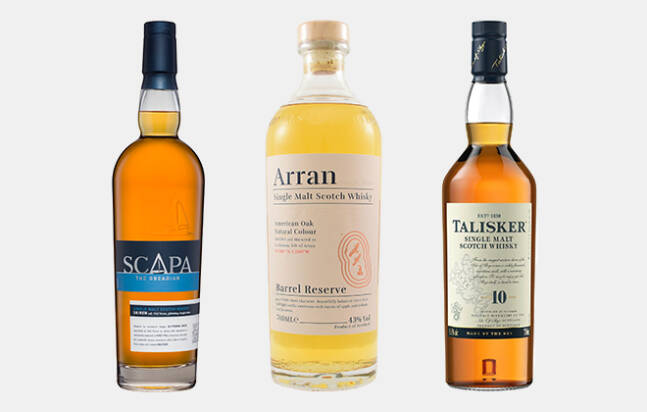
The Islands
Brands to try: Scapa, Highland Park, Arran, Jura, Talisker
While not always listed as a region, we’d be remiss if we didn’t include the other islands. Besides the world-famous Islay, there are more than 800 islands off the coast of Scotland. The islands have a total of 10 distilleries including Scapa and Highland Park on Orkney, Talisker on the Isle of Skye, and Jura and Arran located on islands of the same name.
Like Islay whiskies, the flavors you’ll find in the rest of the islands are those of peat smoke, honey, caramel, spices, and salty ocean brine.

